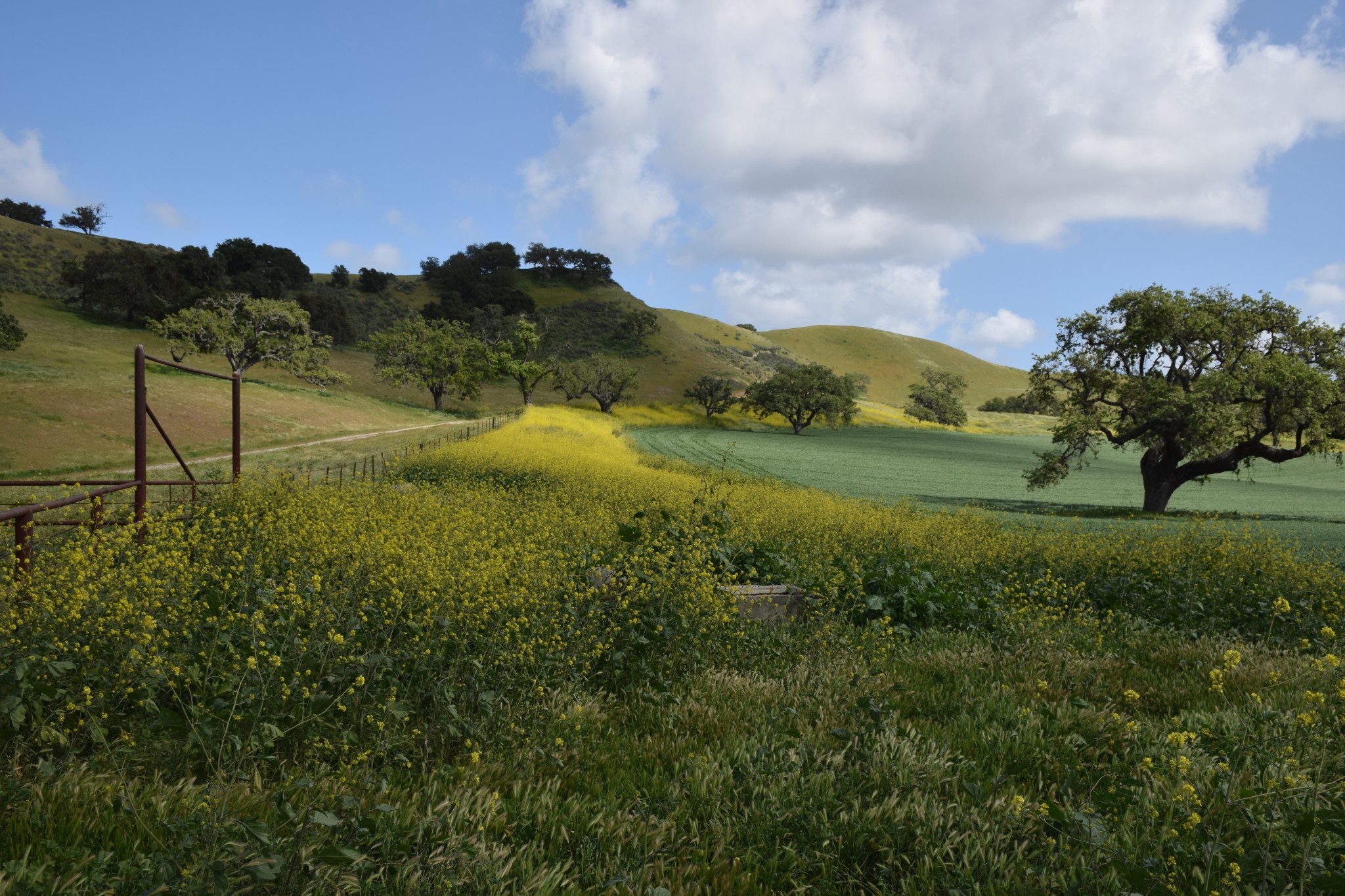Since February I’ve been checking internet reports on California wildflowers. Many of the reports were encouraging. It appears Death Valley put on a good show in February and early March. Unfortunately, because of some eye surgery that prevented me from driving, I missed it.
I’d assumed this year’s wildflower growth in Southern California would be a washout. Maybe, I thought, I’d been wrong. So last week I decided to check out some of the most dependable non-desert locations for wildflower displays. I took a two-day trip up to California’s central coast, then looped back to Gorman on I-5 and the Antelope Valley. The bottom line? Alas, I was right with my earlier assumption. There are places where you can find wildflowers, but the growth is sparse — way below what you’d see in a year with normal rainfall. As Southern Californians well know, El Nino dumped lots of rain on northern California and dropped snow on the Sierra Nevada, but it didn’t make much of a splash this far south.
In this post, I’ll report on what I saw, and show you some photos taken on the trip. The good news, if you’re itching for a spring road trip, is that the hills and valleys are green and beautiful, even if somewhat bereft of floral displays. My road trip was a great chance to connect with what California looked like before we “civilized” it.
Figueroa Mountain
Most years, this is one of Southern California’s wildflower hotspots. For those of you who live in Los Angeles or Orange Counties, it’s a full-day outing getting there and back. Figueroa Mountain is in the northern part of Santa Barbara County, not far from Solvang. This is gorgeous foothill country with peaceful pastures and giant oak trees, as you can see in the photo above. The yellow flowers are wild mustard, which are ubiquitous this year despite the drought. I drove up US 101 past Santa Barbara and Buellton, then took SR 154 east to the village of Los Olivos. Figueroa Mountain Road heads north from there; the turnoff is well-signed.
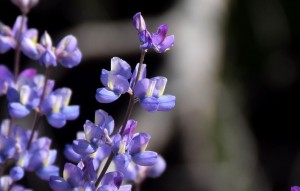
Near the road’s summit, about 12-13 miles from SR 154, is where you’ll find the flowers – such as they are. There’s a fair amount of lupine in bloom, plus scattered clumps of California poppies not quite at their peak.
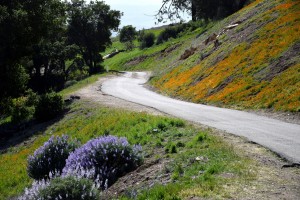
About the road: It’s nearly all paved, but it’s very narrow – so narrow that in places you can’t safely pass oncoming vehicles. Don’t even think of taking an RV or other oversized vehicle on this road! There’s also a short stretch on the way back down that’s unpaved and fairly rough, but definitely passable in Old Betsy if you drive slowly. By the way, coming downhill, the road’s name changes to Happy Canyon Road. Allow 2-3 hours to drive the full 35-mile loop, which is also a great motorcycle route.
Cottonwood Canyon
I spent the night in Santa Maria, then drove east on SR 166. Cottonwood Canyon Road branches off to the right about 40 miles from US 101. After about three miles, you pass hills covered in bright yellow goldfields, but the poppies that are present in a normal year are a no-show. You’ll find a small amount of lupine along the road. This was the best wildflower display I saw, but it’s a long haul from Southern California.
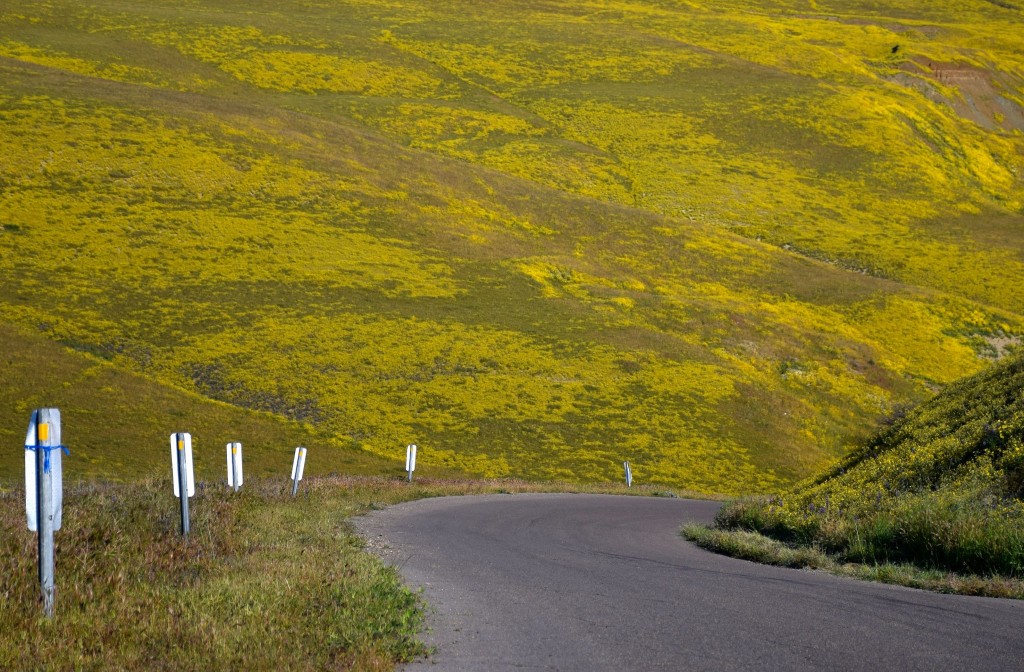
Arvin
Another place where flowers abound in wet years is along SR 223 east of Arvin (south and east of Bakersfield). Not this year. The only poppies I saw were planted in the median of Arvin’s main street. The best things about this detour were the killer tacos al pastor at the Mexican deli inside the Chevron station.
Gorman
If you really have your heart set on seeing wildflowers this year, go to Gorman – the collection of gas stations and fast food joints on I-5 near the summit of Tejon Pass. Take the Gorman exit, turn right, then right again onto Gorman Post Road. After a mile or two, you’ll find some modest displays of poppies and lupine that are close enough to the road that you can photograph individual flowers. This is only about a 90-minute freeway drive from LA, so it’s the best bloom for your buck.
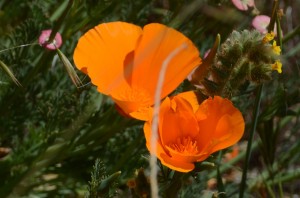
By the way, for you shopaholics, there’s a brand-new outlet mall at Wheeler Ridge, about 12 miles north of Gorman at the bottom of the Grapevine hill on I-5. For details, go to www.tejonoutlets.com.
Antelope Valley
Several miles west of Lancaster is where you’ll find the Antelope Valley State Poppy Reserve. What you won’t find there this year are poppies. None. But all isn’t lost. If you turn south just east of the poppy reserve onto Munz Ranch Road, you’ll find a small concentration of nice wildflowers just before Elizabeth Lake Road. On Wednesday afternoon, there were about 20 cars parked along the road, and the slopes were covered with people. I drove by without stopping.
You can get a weekly update on Southern California wildflower displays at www.theodorepayne.org.
Maybe next year will be better.

